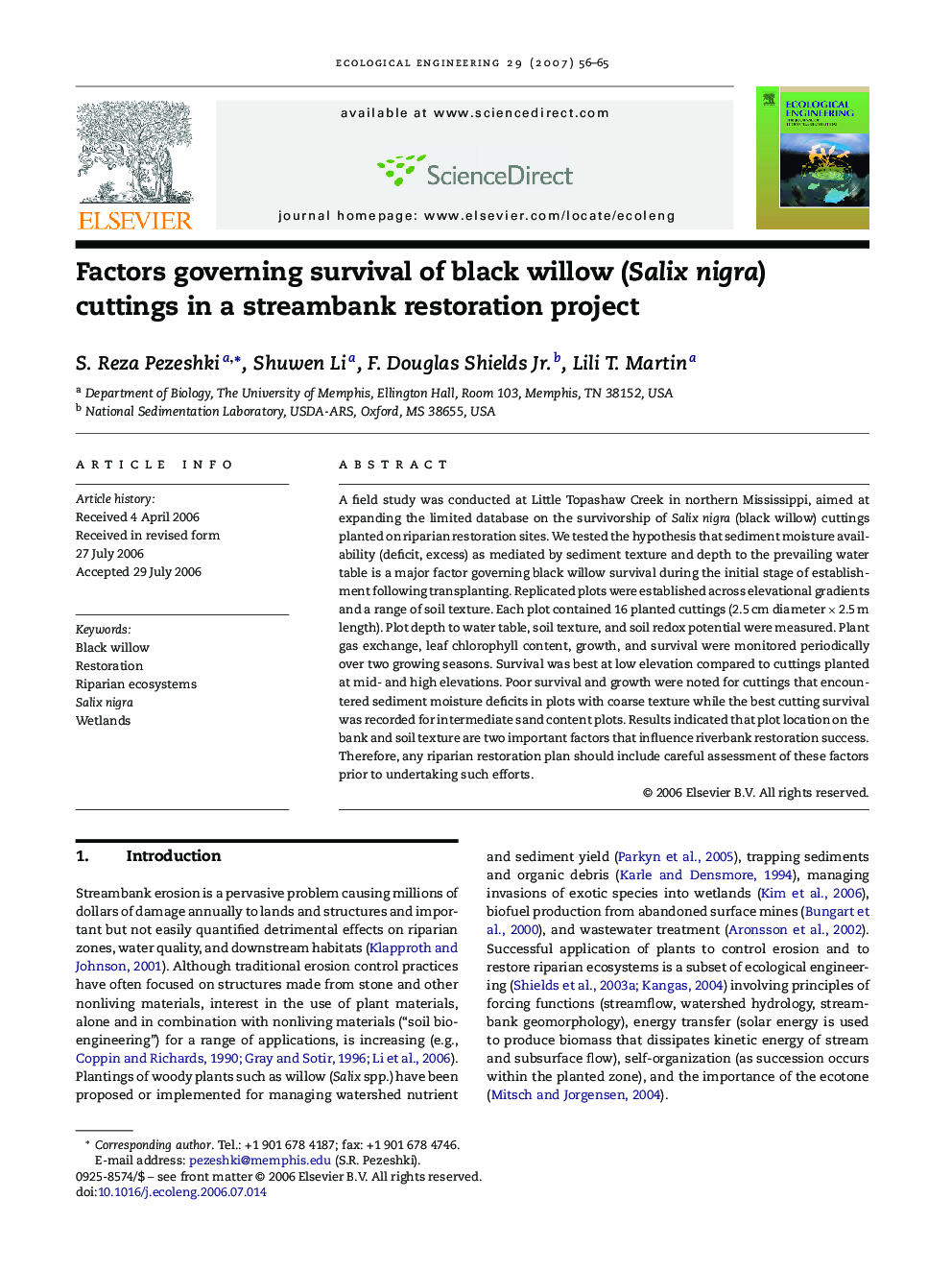| Article ID | Journal | Published Year | Pages | File Type |
|---|---|---|---|---|
| 4391190 | Ecological Engineering | 2007 | 10 Pages |
Abstract
A field study was conducted at Little Topashaw Creek in northern Mississippi, aimed at expanding the limited database on the survivorship of Salix nigra (black willow) cuttings planted on riparian restoration sites. We tested the hypothesis that sediment moisture availability (deficit, excess) as mediated by sediment texture and depth to the prevailing water table is a major factor governing black willow survival during the initial stage of establishment following transplanting. Replicated plots were established across elevational gradients and a range of soil texture. Each plot contained 16 planted cuttings (2.5 cm diameter Ã 2.5 m length). Plot depth to water table, soil texture, and soil redox potential were measured. Plant gas exchange, leaf chlorophyll content, growth, and survival were monitored periodically over two growing seasons. Survival was best at low elevation compared to cuttings planted at mid- and high elevations. Poor survival and growth were noted for cuttings that encountered sediment moisture deficits in plots with coarse texture while the best cutting survival was recorded for intermediate sand content plots. Results indicated that plot location on the bank and soil texture are two important factors that influence riverbank restoration success. Therefore, any riparian restoration plan should include careful assessment of these factors prior to undertaking such efforts.
Related Topics
Life Sciences
Agricultural and Biological Sciences
Ecology, Evolution, Behavior and Systematics
Authors
S. Reza Pezeshki, Shuwen Li, F. Douglas Jr., Lili T. Martin,
